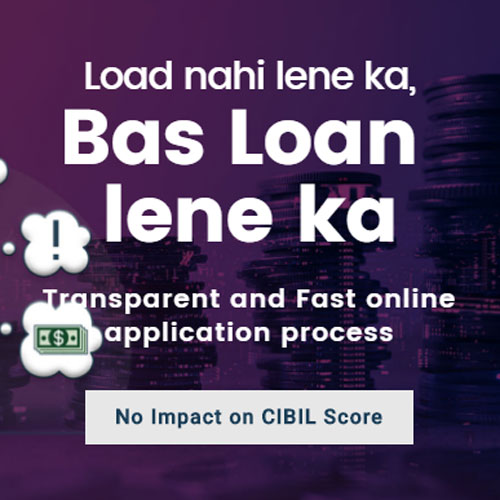Understanding CGTMSE
Micro and Small industries are the backbones of the Indian economy, offering employment to millions. A number of these enterprises face issues when it comes to availing funds, which is why the government set up the Credit Guarantee Fund Trust for Micro and Small Enterprises (CGTMSE). The Indian Government tied up with SIDBI to set up this Credit Guarantee Scheme which aims to provide credit to deserving individuals/entities based on project viability, ensuring they have access to working capital and/or term loans from a single lending entity.
What is the CGTMSE Scheme?
A brainchild of the Ministry of Micro, Small and Medium Enterprises, the CGTMSE Scheme is a unique offering which aims to bridge the gap between a business idea and its execution, offering financial support to entrepreneurs. Under the scheme, eligible members can get credit facilities from banks to finance medium and small enterprises. Loans up to a maximum of Rs 1 crore can be availed, with the differentiating factor being the Credit Guarantee provided by the government.
Eligibility criteria for CGTMSE Loan
Availing a loan under the CGTMSE Scheme isn’t hard, for the government has set eligibility criteria which can be met by almost everyone. Listed below are the main criteria the government expects borrowers to fulfill.
- Borrower status – Loans under this scheme can be availed by both new and existing borrowers.
- Business plan – A concrete and a feasible business plan needs to be in place to avail the loan.
- Registration – The organization/entity should have registered the business as per existing rules.
Quantum of credit offered under CGTMSE
Eligible individuals/ organizations can get loans to the tune of Rs 1 crore under this scheme, depending on their business plan and requirement. The cover offered under the Credit Guarantee Policy varies depending on the loan availed, with the maximum guarantee amount being Rs 65 lakh.
Getting a business loan under CGTMSE
A simple process is followed by most lending institutions who are part of the CGTMSE Scheme, with borrowers expected to follow a few basic steps in order to get credit.
- Idea generation – The first step towards achieving a dream is to have an idea. Any idea which is feasible and can contribute to the growth of the MSME sector can be the basis for further work.
- Registration – One should register a business entity as per existing laws. This can be a partnership firm, a private company, proprietorship, etc.
- Business development plan – A concrete and workable business development plan is required before approaching lending institutions for a loan. This plan should have in-depth information about multiple aspects related to the idea.
- Approach lending organization – Post the preparation of a business plan one could approach any of the lending organizations associated with this scheme. The banks will process the information and grant a loan under CGTMSE.
- CGTMSE cover – The cover will be availed on paying a certain fee to lending institutions.
Fees and the Interest rate charged under CGTMSE Scheme
Being a scheme which is implemented by Member Lending Institutions (MLIs) on behalf of the government, there are certain fees and charges associated with it. One can classify the fees into two major categories, a Guarantee Fee, and an Annual Service Fee.
-
- Guarantee fee – Each MLI is expected to pay a guarantee fee to the trust, with this amount depending on the quantum of credit provided. MLIs are expected to pay this fee within a period of 30 days from the disbursement of credit. The table below highlights the guarantee fee applicable in different cases.
Amount Sanctioned (Rs) Guarantee fee for borrowers from North East Guarantee fee for others 0.75% 1% of amount sanctioned >5 lakhs 0.75% 1.5% of amount sanctioned > 50 Lakhs NA 1.5% of amount sanctioned - Annual service fee – Each MLI is expected to pay an annual service fee in order to validate the guarantee cover offered under CGTMSE. This fee should be paid before June 1st every year. The table below highlights the annual service fee applicable in different cases.
Amount Sanctioned (Rs) Annual service fee 0.5% of the amount guaranteed >5 lakhs 0.75% of the amount guaranteed - Interest rate – Lending institutions can charge an interest rate as their discretion, subject to the condition that this rate falls under RBI guidelines. This interest rate depends on the Prime Lending Rate (PLR) of an institute, with it not exceeding the PLR by over 3%. For example, if the PLR of a bank is 9%, the maximum interest it can charge is (9 + 3) = 12%.
- Guarantee fee – Each MLI is expected to pay a guarantee fee to the trust, with this amount depending on the quantum of credit provided. MLIs are expected to pay this fee within a period of 30 days from the disbursement of credit. The table below highlights the guarantee fee applicable in different cases.
Note: While the interest rate is to be borne by the borrower, MLIs can choose to pay the annual service/guarantee fee through their own funds or pass the fee to borrowers.





